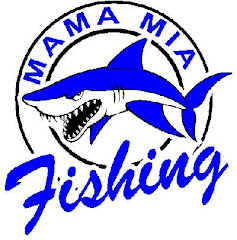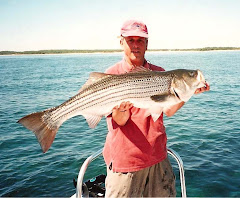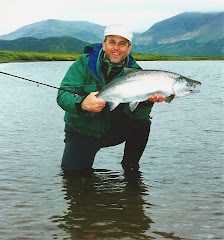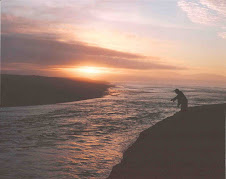Sunday, March 14, 2010
Fundamentals of Fly-Fishing the Surf
If you are interested in exploring the exciting world of saltwater fly fishing you may want to consider joining Angelo Peluso for a unique fly-fishing class. Instruction will take place at selected beach locations where the fundamentals of fly-fishing will be taught in an informal and conversational setting. The basic program is geared toward the new or intermediate fly angler with customized sessions available for more experienced anglers. With almost forty years of fly-fishing experience under his wading belt, Angelo has a wealth of information to share with students attending his classes. Topics covered include: Rod and Reel Selection; Casting; Retrieves; Line Selection; Leaders/Knots; Fly Selection; Essential Gear; Reading Water; Tactical Wading; Elements of Structure; Tactics for local game fish and Beach Safety. Individual and group sessions (up to four participants) are available, and can be structured to meet any specific needs or interests. The full program runs three hours. Specialized hourly classes can also be arranged to meet specific needs, interests or time constraints. Individual instructions as well as small group (4) sessions are available. If you want to cut down the learning curve and quick start your fly-fishing game this may be just the ticket you need to get into ‘fish on the fly’ this season. Angelo’s popular and comprehensive guidebook, Fly Fishing Long Island, is also included as part of the class material. For further information and rates please contact Angelo directly at SaltyFlyLIF@aol.com or visit his website at http://www.angelopeluso.com/.
Saturday, March 6, 2010
The Joys of Shad
One of the feistiest early season light tackle and fly game fish is the American Shad. While Long Island sees mostly visits of Hickory Shad, the Americans are well within striking distance of Long Island anglers who might like a late March or early April break from the winter hiatus. The Delaware and Connecticut Rivers both still enjoy returns of American Shad. Most of my fishing for shad has been in the lower portion of the Delaware River. That shad run is still a much-heralded fish happening in all the towns along the Delaware. The run has been celebrated for as long as this great nation of ours has been united republic. Once living close to the town of Lambertville, New Jersey I had numerous opportunities to witness the last remaining seine netting operation of shad on the river. The Fred Lewis family still nets shad as it has done since 1888 from an island bearing the family name. From those nettings, the well-known Lambertville Shad Festival is kept stocked with an inventory of fresh fish for visitors to sample, cooked in a variety of tasty ways. The seining process is quite a unique sight and even more of a tourist attraction. Seeing all those shad is enough to get any fisherman excited.
I have been fishing for shad on a fly rod and light tackle for about twenty-six years now. My indoctrination to the species came during a period when I lived along the lower reaches of the Delaware River in Hunterdon County, NJ.
Big roe American Shad can reach weights of eight or nine pounds. The buck shad are about half that size. They will be active in the Delaware River from late March in the lower portions of the river until late June in the upper reaches above the Water Gap where they spawn.. Shad prefer cooler water temperatures and will become active with water around the mid-fifty degree mark and into the low sixty-degree range. While they can still be found during summer months, the spring is by far the peak time.
Since catching those first shad I make it a point to target them in the early part of each season and I always have a wonderful time with a suitably sized fly rod or light spinning outfit. Most any small to moderately sized flies work well, and truth be told they offer much more sport than early-season stocked trout. They strike lures aggressively, and go airborne. When the choice is planted trout or fresh sea run shad the shad will always win out in my book. Shad belong to the same family of fish as herring and the same family as tarpon. While diminutive in size they have inherited many of the same sporting qualities and attributes of their very large cousins. They are a fun fish. And they will offer a ‘quantity’ experience as well.
When fly fishing for shad, the lighter the outfit the better. Any good trout rod in 6 or 7 weight is ideal; no need to go much larger than an 8 weight. Even if school-sized striped bass are in the neighborhood, the lighter rods will offer much more enjoyment. Since shad feed on a wide array of food sources from plankton to small crustacean and baitfish, a number of different flies will work quite well. Small versions of Deceivers and Clouser Minnows are ideal but I have found that tiny dart-sized flies used for Sockeye salmon work very well in all sorts of wild colors, chartreuse, orange, gold, yellow and red being some personal favorites. As far as lines go, preferences are toward high-density sink tip lines. A short, 6-foot leader is all that is required since shad are far from being line shy. Shad can also be fished effectively on light spinning gear with traditional darts, spinners and small tins.
Shad populations fluctuate so check on local state regulations before pursuing this spunky game fish.
I have been fishing for shad on a fly rod and light tackle for about twenty-six years now. My indoctrination to the species came during a period when I lived along the lower reaches of the Delaware River in Hunterdon County, NJ.
Big roe American Shad can reach weights of eight or nine pounds. The buck shad are about half that size. They will be active in the Delaware River from late March in the lower portions of the river until late June in the upper reaches above the Water Gap where they spawn.. Shad prefer cooler water temperatures and will become active with water around the mid-fifty degree mark and into the low sixty-degree range. While they can still be found during summer months, the spring is by far the peak time.
Since catching those first shad I make it a point to target them in the early part of each season and I always have a wonderful time with a suitably sized fly rod or light spinning outfit. Most any small to moderately sized flies work well, and truth be told they offer much more sport than early-season stocked trout. They strike lures aggressively, and go airborne. When the choice is planted trout or fresh sea run shad the shad will always win out in my book. Shad belong to the same family of fish as herring and the same family as tarpon. While diminutive in size they have inherited many of the same sporting qualities and attributes of their very large cousins. They are a fun fish. And they will offer a ‘quantity’ experience as well.
When fly fishing for shad, the lighter the outfit the better. Any good trout rod in 6 or 7 weight is ideal; no need to go much larger than an 8 weight. Even if school-sized striped bass are in the neighborhood, the lighter rods will offer much more enjoyment. Since shad feed on a wide array of food sources from plankton to small crustacean and baitfish, a number of different flies will work quite well. Small versions of Deceivers and Clouser Minnows are ideal but I have found that tiny dart-sized flies used for Sockeye salmon work very well in all sorts of wild colors, chartreuse, orange, gold, yellow and red being some personal favorites. As far as lines go, preferences are toward high-density sink tip lines. A short, 6-foot leader is all that is required since shad are far from being line shy. Shad can also be fished effectively on light spinning gear with traditional darts, spinners and small tins.
Shad populations fluctuate so check on local state regulations before pursuing this spunky game fish.
Subscribe to:
Posts (Atom)










